Limb lengthening surgery in Turkey is gaining popularity due to its high standards and affordability. Limb lengthening surgery Turkey offers state-of-the-art medical facilities and highly skilled surgeons specializing in limb lengthening surgery. Patients from around the world choose limb lengthening Turkey for their procedures because of the combination of excellent healthcare services and lower limb lengthening surgery cost in Turkey compared to other countries. Additionally, the country provides a comfortable recovery environment with numerous medical tourism services that cater to international patients’ needs.
What Is Limb Lengthening Surgery?
Limb lengthening surgery is a procedure designed to increase the length of the bones in the legs. This surgery is often sought by individuals who wish to enhance their height for cosmetic reasons or to correct discrepancies in limb length caused by medical conditions.
How does limb lengthening surgery Turkey work? It involves surgically cutting the bone and gradually stretching it using a specialized device, allowing new bone tissue to grow and fill the gap, resulting in increased limb length.
Who Is a Good Candidate for Limb Lengthening Surgery?
Limb lengthening surgery is typically suitable for individuals who either suffer from a limb length discrepancy or desire cosmetic height enhancement. People with medical conditions like congenital deformities, bone injuries, or growth-related issues can benefit from this treatment. The procedure is also considered by adults seeking a height increase for personal or professional reasons, provided they meet strict health and psychological criteria.
Ideal candidates must be in overall good physical condition and mentally prepared for the process. Because limb lengthening surgery recovery time can span several months, commitment to physical therapy and follow-up care is crucial. A full evaluation by an orthopedic surgeon helps ensure that patients understand the expectations, risks, and realistic limb lengthening surgery before and after outcomes.
Medical Conditions That Qualify for Limb Lengthening Surgery
People with conditions such as achondroplasia, post-traumatic leg shortening, or congenital deformities may qualify for limb lengthening surgery. When medically necessary, this procedure improves mobility, balance, and quality of life through carefully guided bone growth.
Psychological Considerations Before Limb Lengthening Surgery
Emotional readiness is key for patients considering limb lengthening surgery. Mental strength, patience, and clear expectations help support a smooth recovery. A psychological assessment ensures that the individual understands the process and is committed to the journey from surgery through rehabilitation.
How Does Limb Lengthening Surgery Work?
How is limb lengthening done? The procedure involves several stages, starting with an osteotomy, where the bone is surgically cut. After the osteotomy, a device, either external or internal, is used to gradually separate the bone segments. This device slowly extends, usually at a rate of about 1 millimeter per day, allowing new bone to form in the gap.
During the lengthening phase, patients must undergo regular check-ups to monitor their progress. Physical therapy is often required to maintain joint flexibility and strength. Once the desired length is achieved, the consolidation phase begins, during which the new bone solidifies and strengthens.
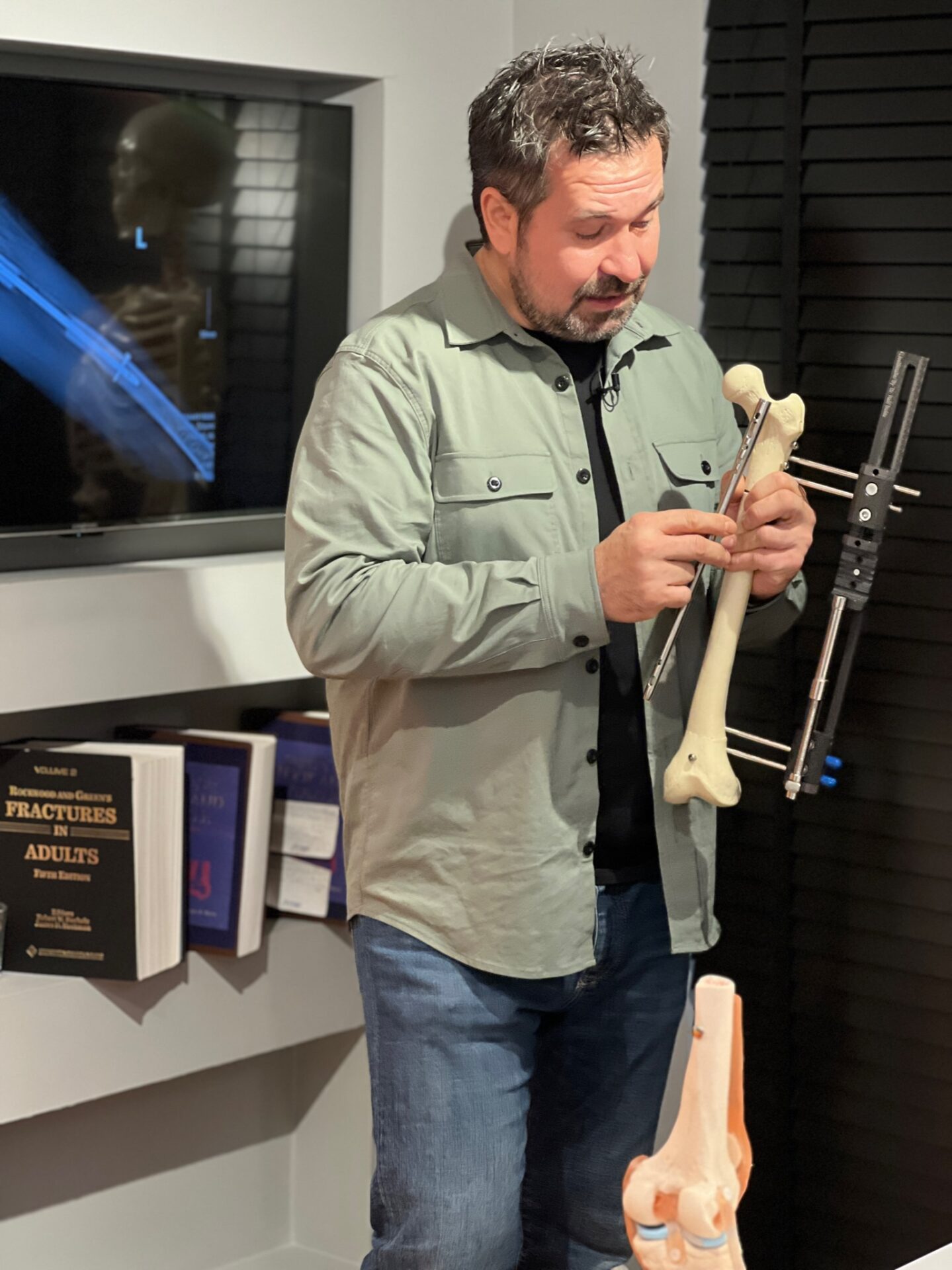
Risks and Complications of Limb Lengthening Surgery
As with any surgical procedure, limb lengthening surgery carries certain risks. Common complications may include infection at the surgical site, joint stiffness, nerve irritation, or delayed bone healing. These risks can be minimized through expert care, close monitoring, and strict hygiene during the lengthening and recovery phases.In rare cases, more serious complications such as bone misalignment or implant failure may occur. However, advances in surgical techniques and equipment have significantly improved the limb lengthening surgery success rate. Choosing an experienced surgical team and following rehabilitation guidelines are the best ways to reduce complications and achieve safe, predictable outcomes.
Limb Lengthening Surgery Methods
There are various methods of limb lengthening surgery, each with its own advantages. The most common techniques include the use of external fixators (LON method), such as the Ilizarov apparatus, and internal devices like the Precice nail (Precice 2 method). The Ilizarov method uses an external frame attached to the bone with pins and wires, which are adjusted to gradually lengthen the bone. The PRECICE nail is a more modern, internal device that is inserted into the bone. This method offers the advantage of being less visible and potentially more comfortable for the patient.
| Criteria | Ilizarov / LON (External Fixator) | PRECICE (Internal Nail) |
|---|---|---|
| Device Type | External metal frame with pins and wires | Internal magnetic-controlled nail inserted into the bone |
| Visibility | High – device is fully external | Very low – completely internal |
| Comfort | Lower comfort; device may irritate the skin | Higher comfort; no external hardware |
| Pain Level | Generally more discomfort and pain | Less pain; smoother recovery |
| Infection Risk | Higher – pin sites can get infected | Lower – no open pin sites |
| Daily Life / Clothing Compatibility | Difficult – bulky and visible | Excellent – not noticeable under clothing |
| Lengthening Control | Manual adjustment (turning screws daily) | Remote-controlled, precise adjustments |
| Recovery Process | Longer, more challenging | Shorter, more stable and comfortable |
| Cost | Lower – more affordable option | High – one of the most expensive methods |
| Return to Sports / Activity | Slower and more limited | Faster and safer return |
| Scarring | More scarring due to pin sites | Minimal scarring from surgical incisions only |
| Ideal Patient Profile | Patients on a budget or with severe deformities | Patients prioritizing comfort, aesthetics, and low risk |
Day-by-Day Timeline After Limb Lengthening Surgery
The recovery journey following limb lengthening surgery begins immediately after the operation. The first few days focus on pain management and rest, followed by physical therapy sessions aimed at improving movement and circulation. Around the seventh day, the bone lengthening phase begins, typically at a rate of 1 mm per day.
As the new bone forms, patients must attend regular follow-up appointments to monitor progress. Daily exercises and mobility support are crucial during this time. The external device is removed once the desired length is achieved, while the internal fixator may remain longer. Full recovery, including walking without support, varies depending on individual healing speed and adherence to the post-surgery program.
Limb Lengthening Surgery Recovery Time
The limb lengthening surgery recovery time can vary based on the individual and the extent of the lengthening. Typically, the entire process from surgery to full recovery can take between 6 to 12 months.
Recovery involves not only physical healing but also rehabilitation through physical therapy to regain strength and mobility. Patients need to follow their surgeon’s guidelines closely, attend regular check-ups, and engage in prescribed exercises to ensure a smooth recovery.
How Much Height Can Be Increased By Limb Lengthening Surgery?
Limb lengthening Turkey can significantly increase a person’s height. On average, patients can achieve an increase of 2 to 3 inches (5 to 7.5 centimeters) per surgery. In some cases, with multiple surgeries, individuals may gain up to 6 inches (15 centimeters) in height.
Discussing goals and desired outcomes with a qualified surgeon will help determine the best approach and achievable results. The best limb lengthening surgery in Turkey offers life-changing benefits for many individuals, boosting self confidence and overall well-being.
Limb Lengthening Before and After
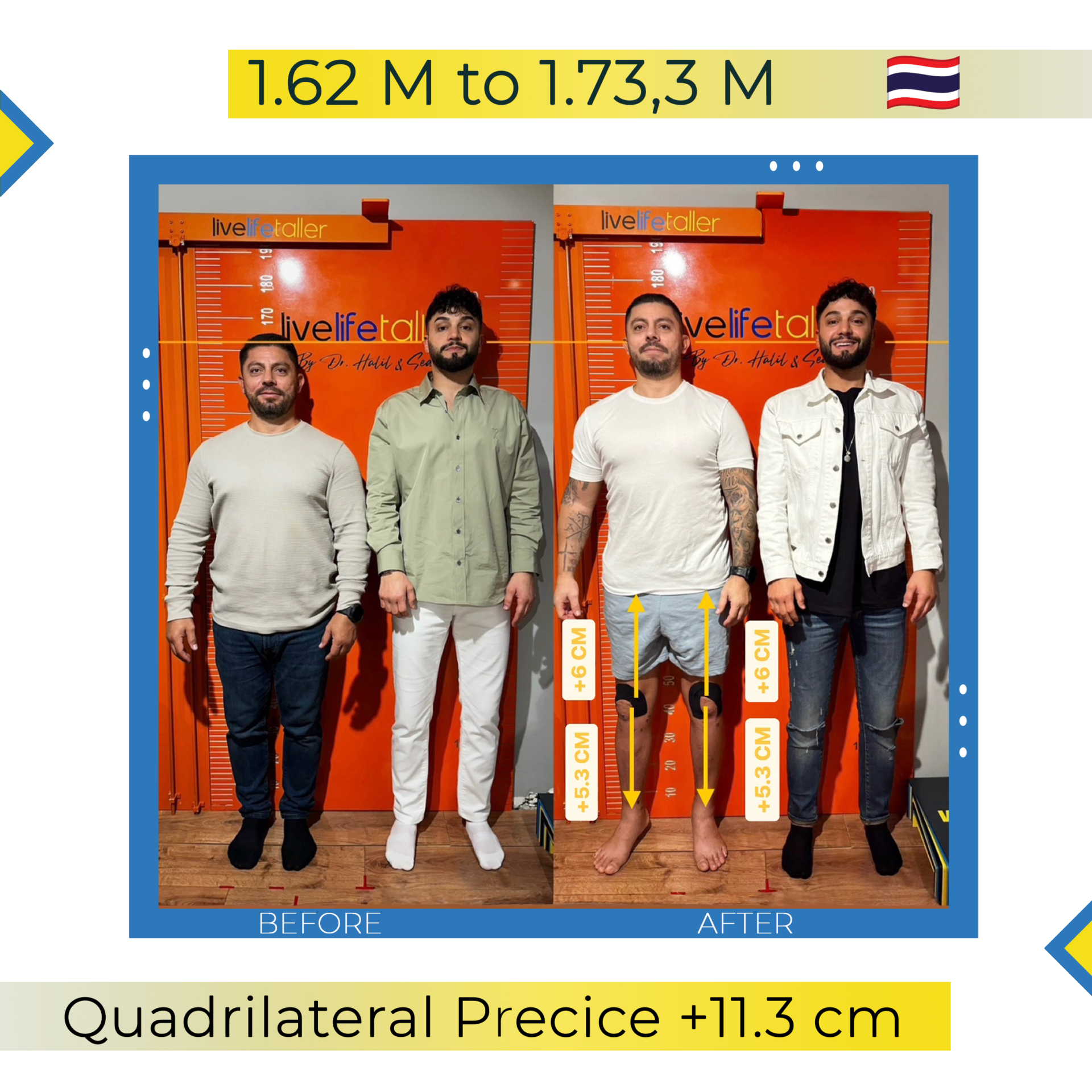

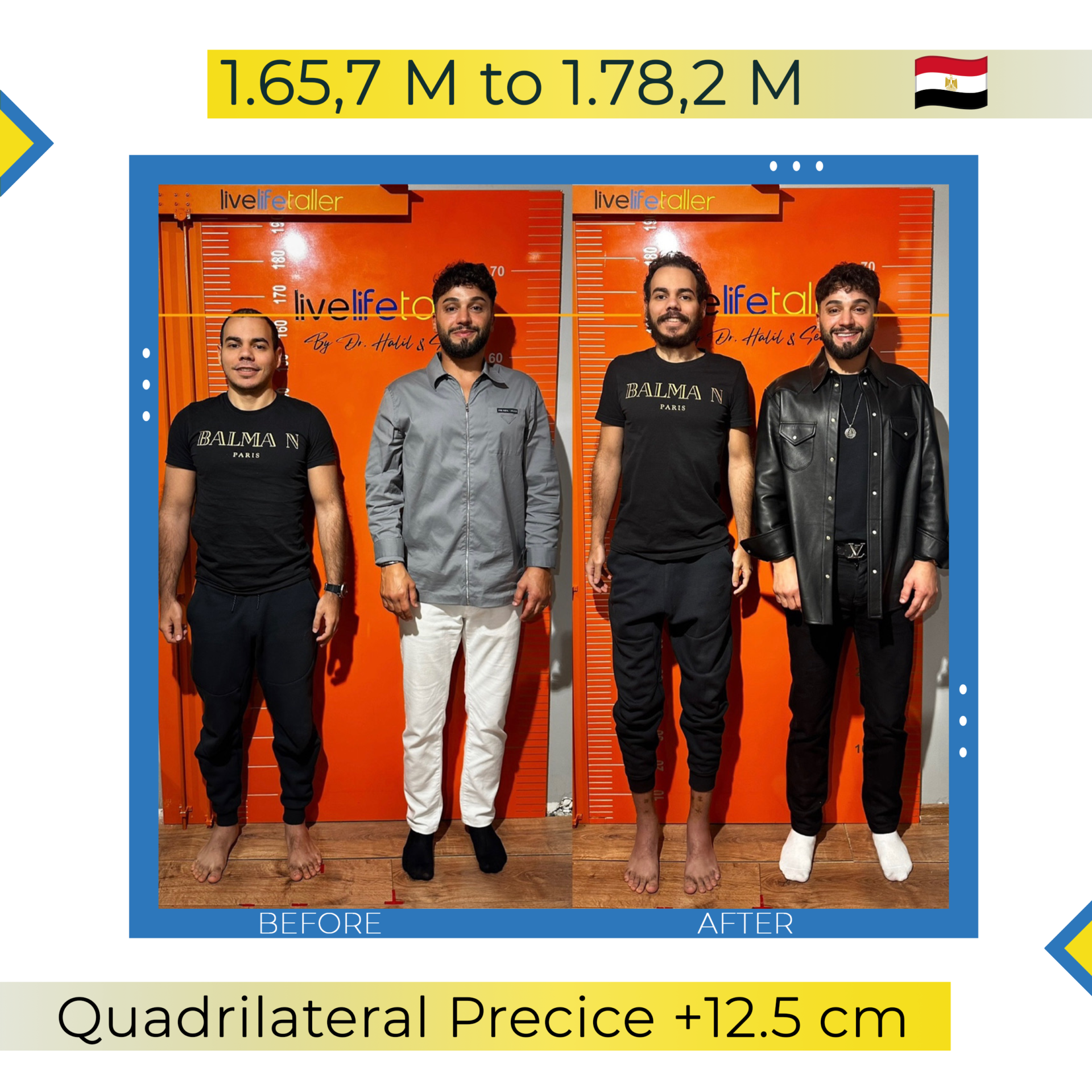
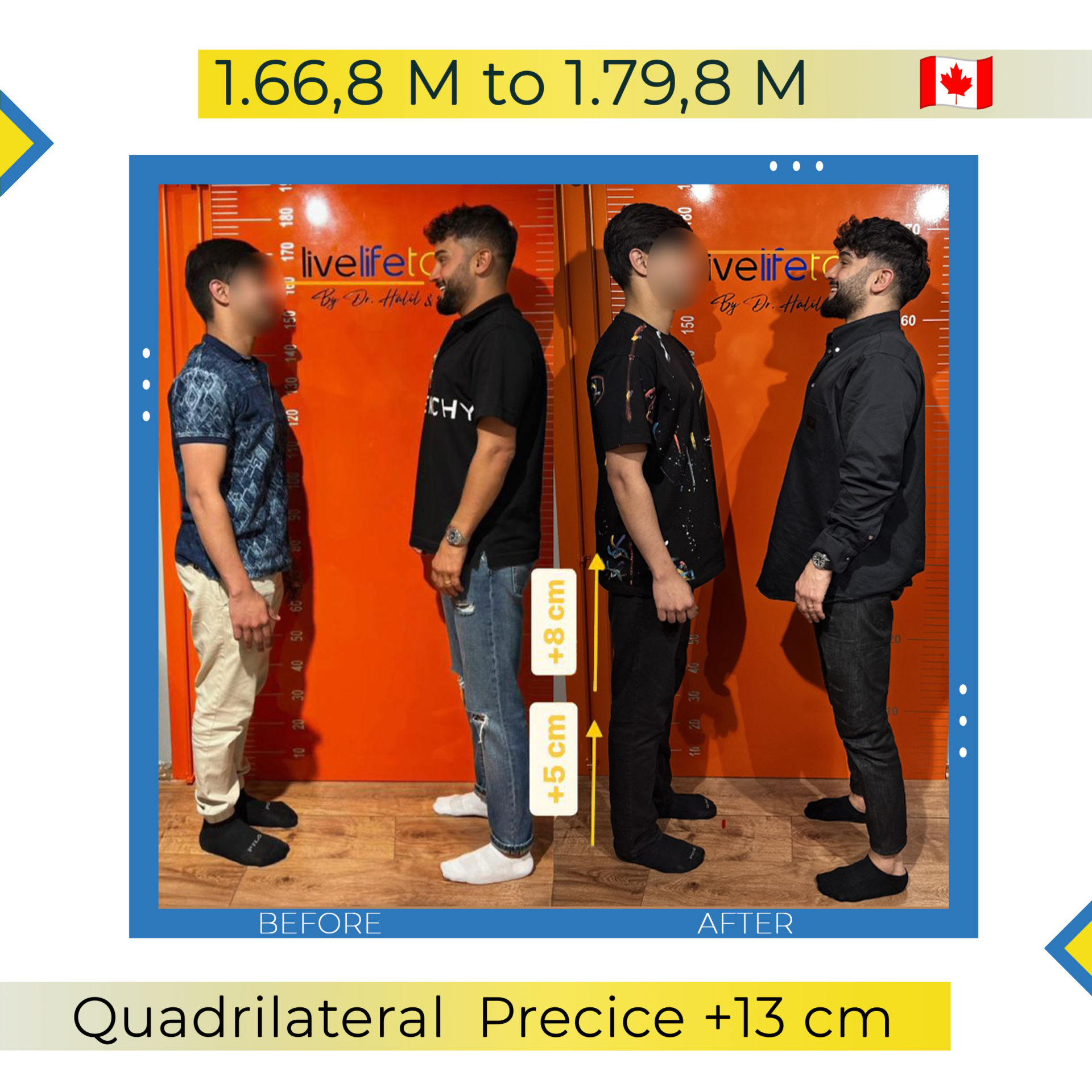
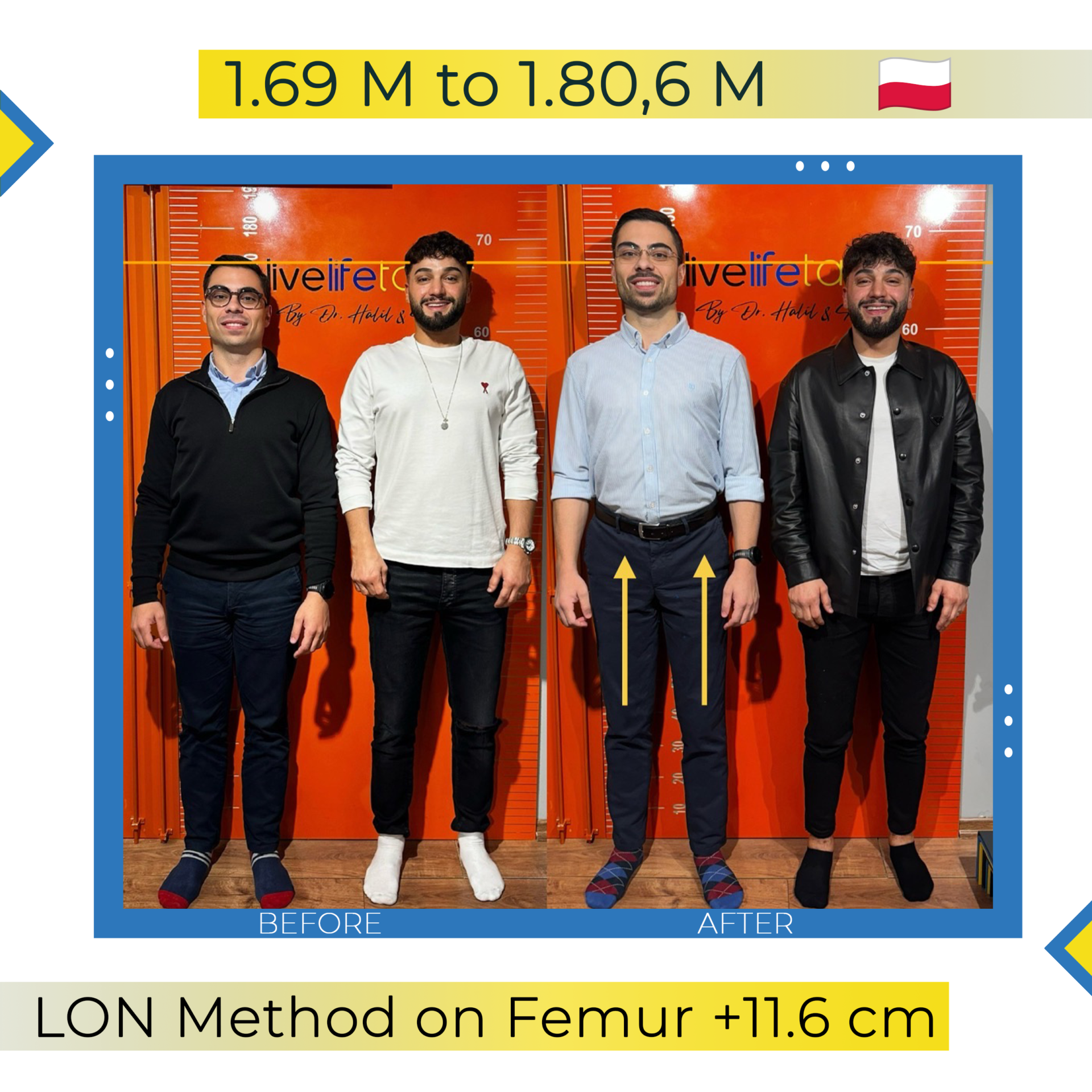
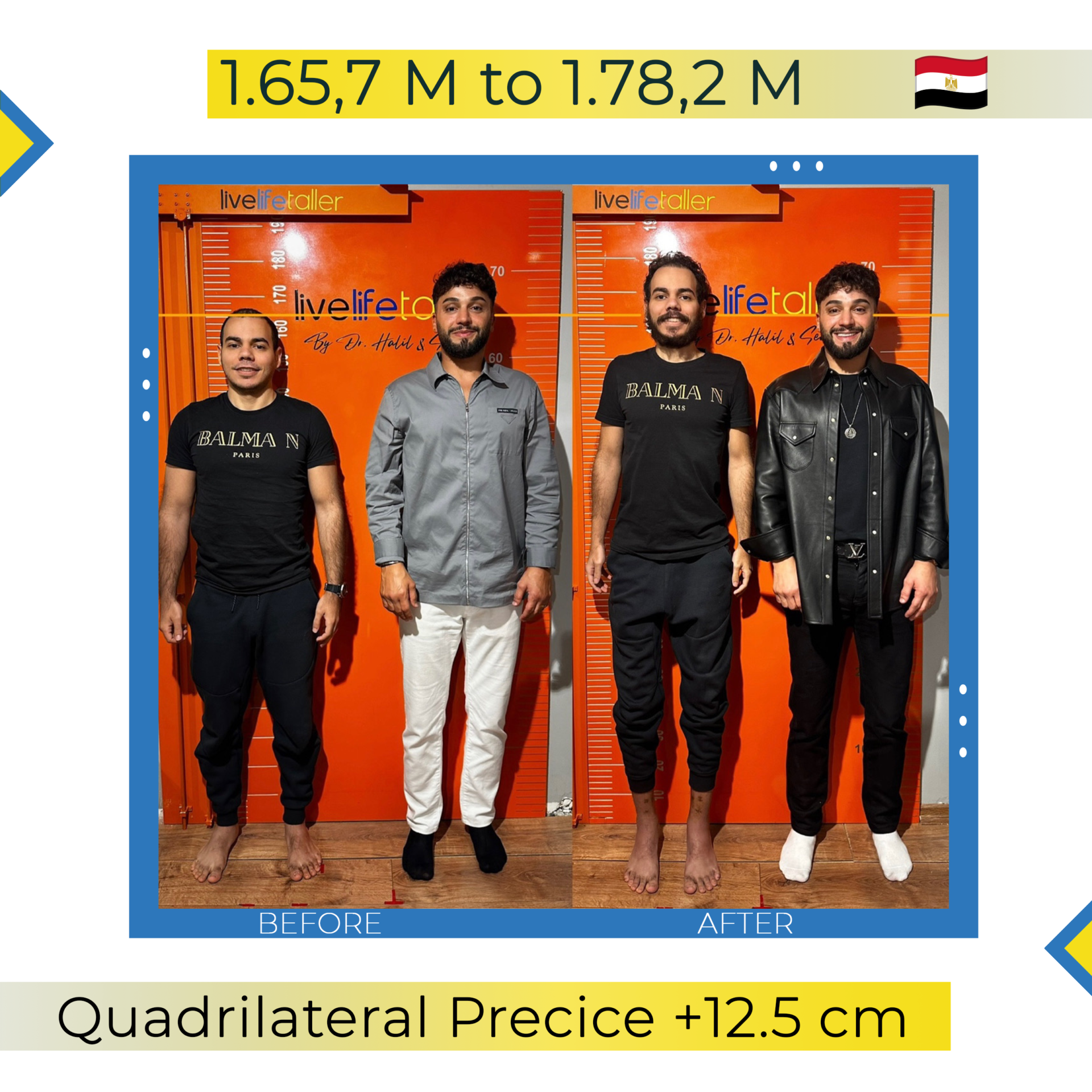
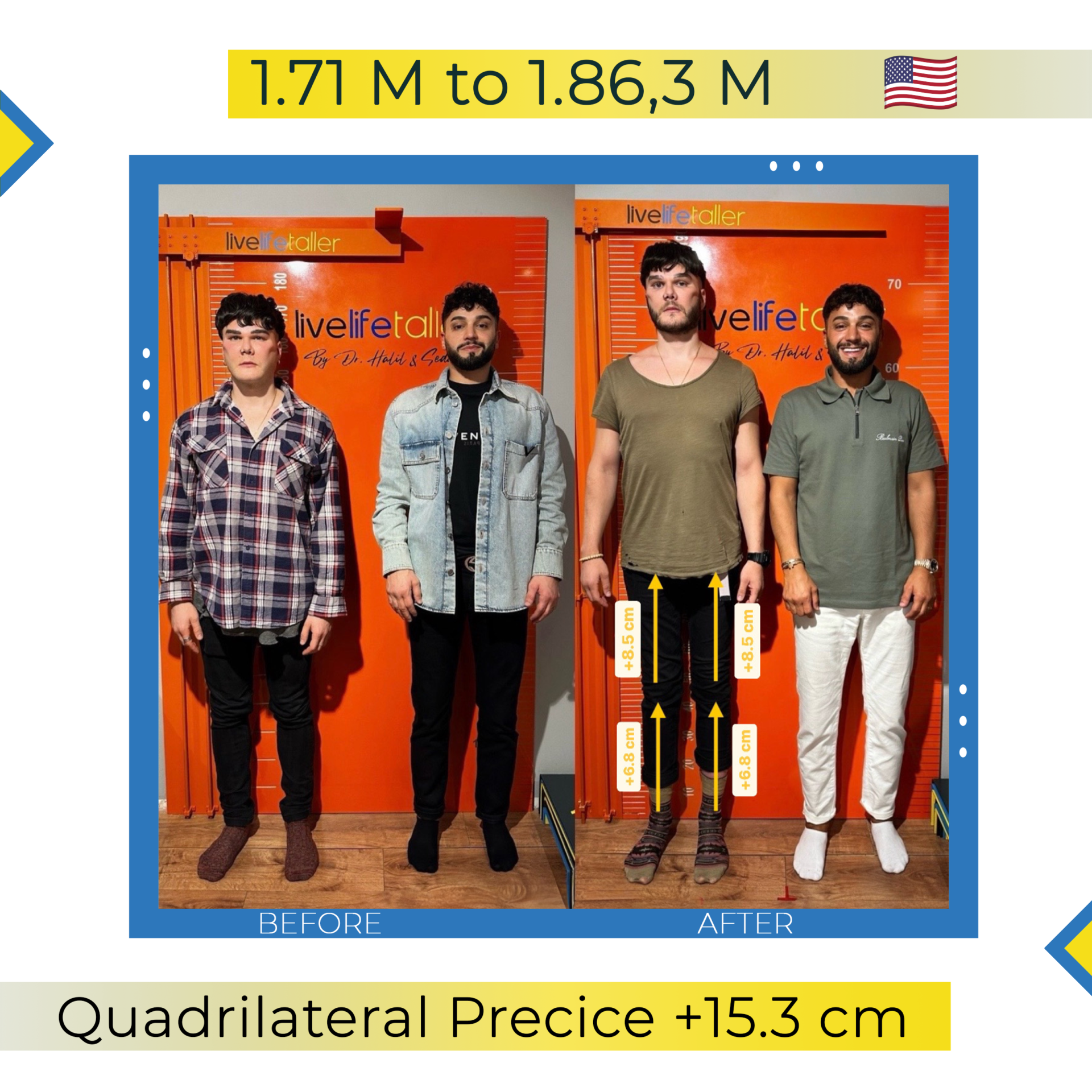

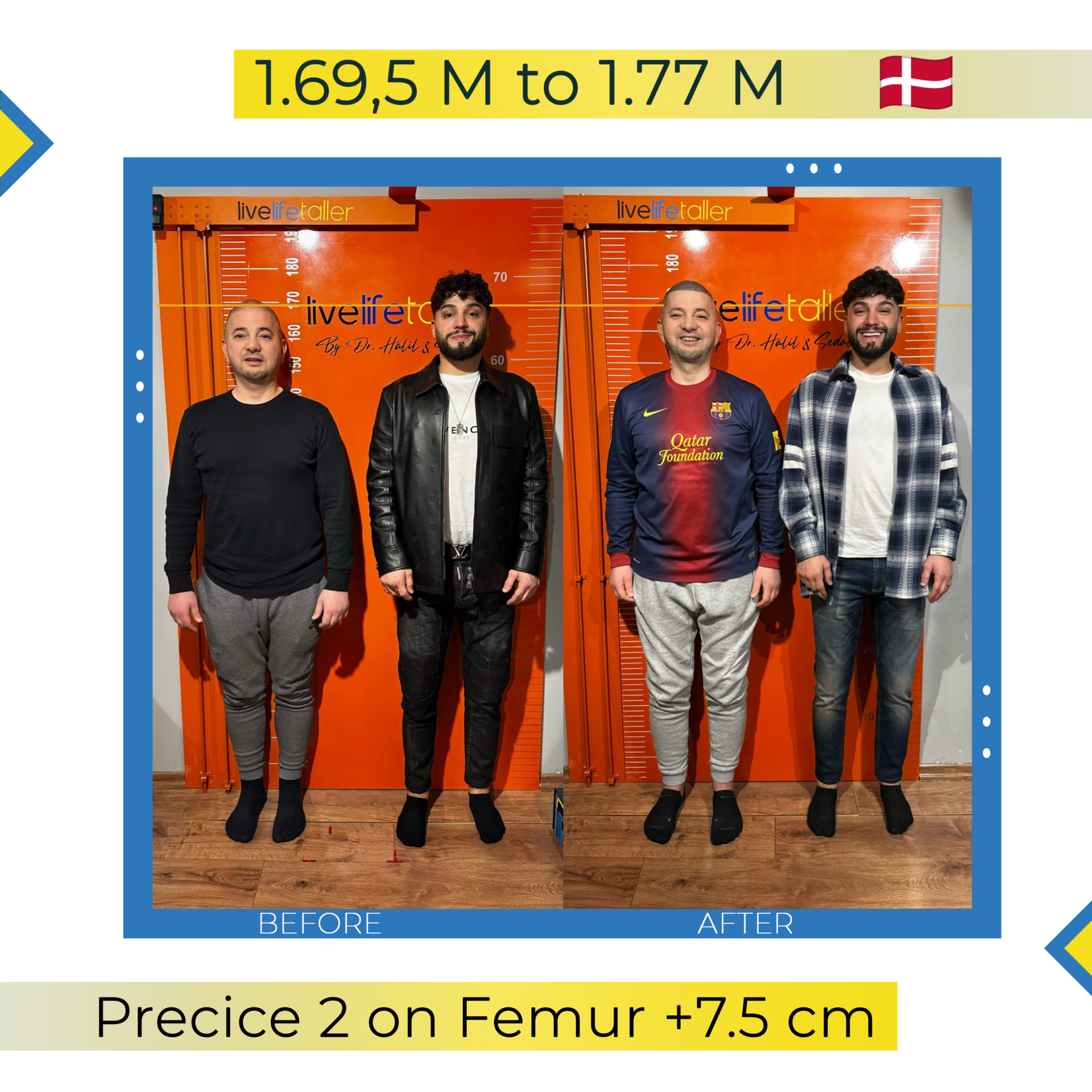
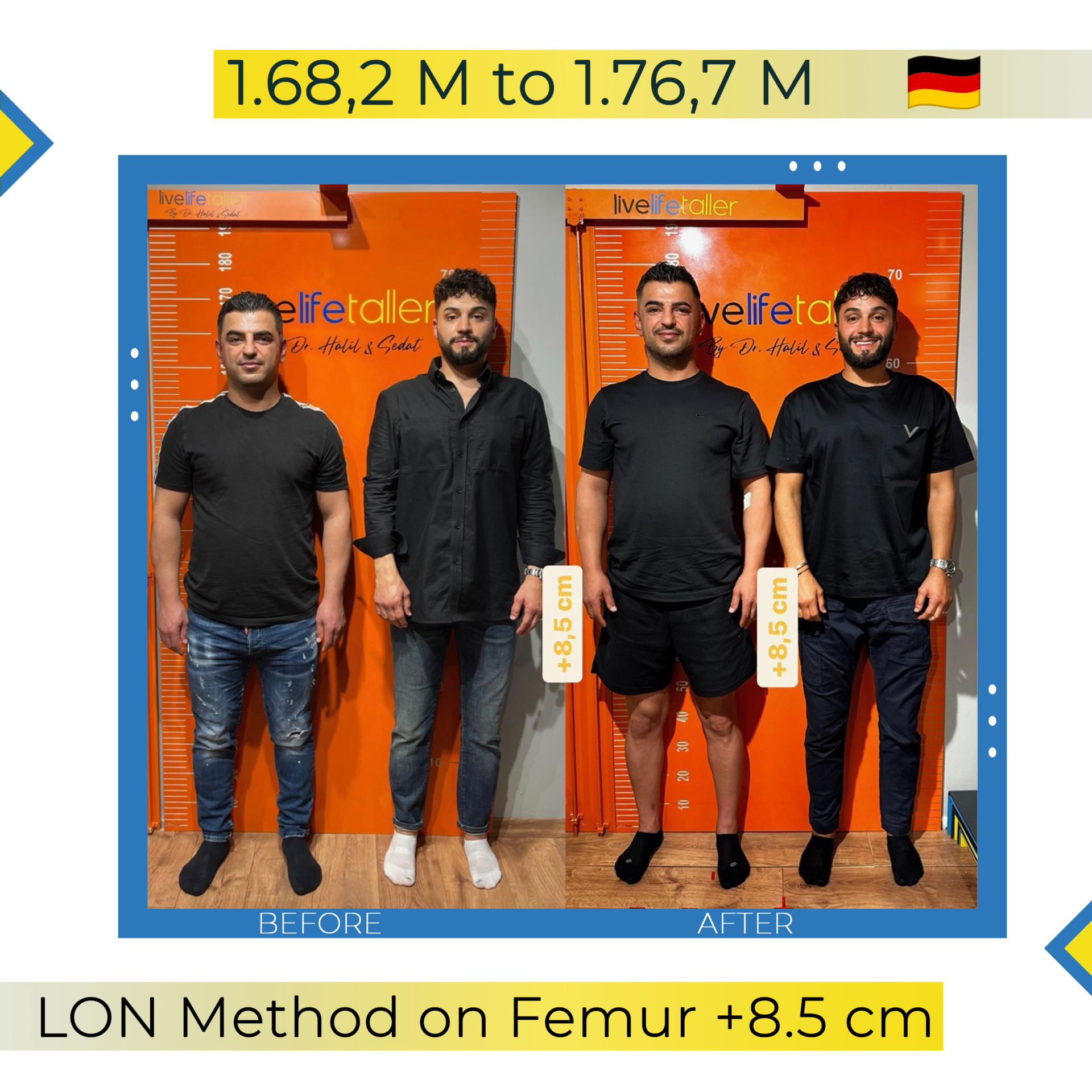
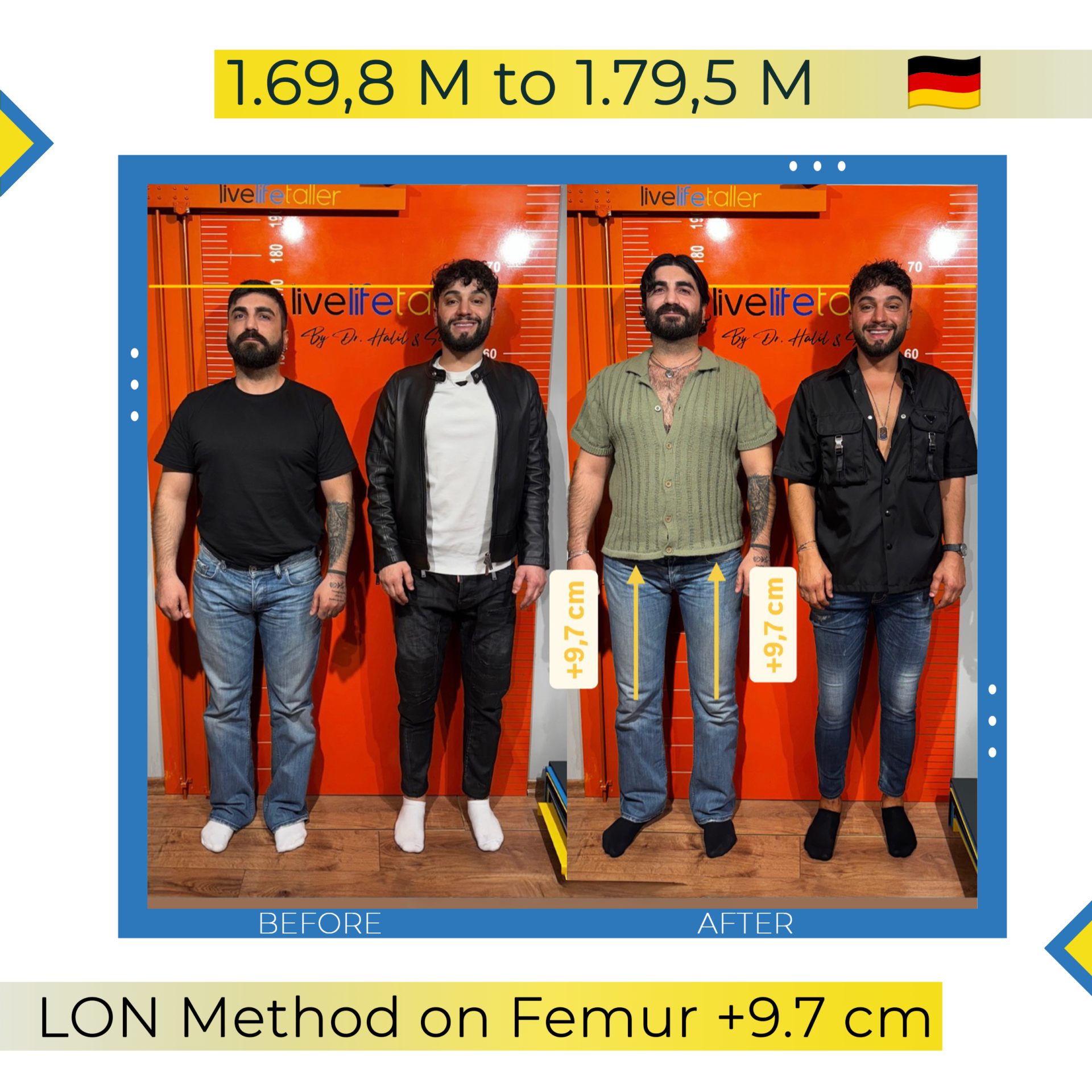
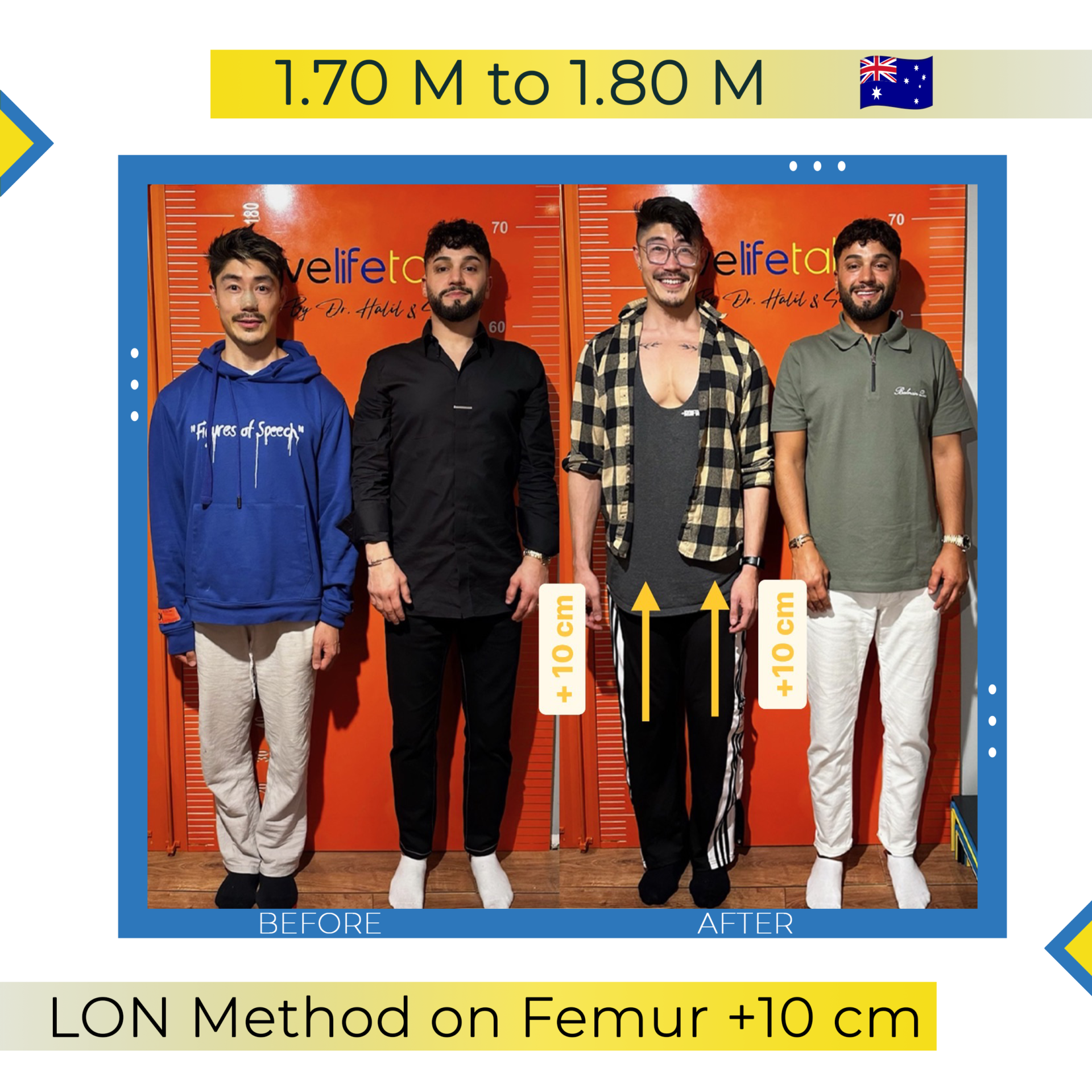
Live Life Taller Reviews & Limb Lengthening Surgery Testimonials
Patients from around the world have shared their personal experiences with limb lengthening surgery at LiveLifeTaller. Most describe the process as life-changing, praising the professionalism of the surgical team and the supportive environment provided during recovery. These real-life testimonials often highlight not only physical transformation but also improved confidence and lifestyle.
Many reviews compare limb lengthening surgery before and after results and express satisfaction with the gradual progress made over time. The supportive medical care, access to physical therapy, and careful follow-up all contribute to a higher limb lengthening surgery success rate. These positive experiences help future patients make informed and confident decisions.
Limb Lengthening Surgery Cost in Turkey
The cost of limb lengthening surgery Turkey can vary widely depending on several factors, including the location of the surgery, the method used, and the individual patient’s needs. In Turkey, the limb lengthening surgery cost in Turkey is generally more affordable compared to other countries. It’s important to consider that the cost also includes expenses related to physical therapy and potential complications.
Why Turkey is Popular for Limb Lengthening Surgery
In recent years, Turkey has become one of the leading destinations for limb lengthening surgery. The country offers internationally accredited hospitals, modern technology, and highly experienced orthopedic surgeons at a fraction of the cost compared to other countries. These advantages make Turkey an ideal location for both medical and aesthetic limb lengthening procedures.
One of the key benefits is the affordable limb lengthening surgery in Turkey, which doesn’t compromise on quality. Patients receive comprehensive care, from pre-surgical evaluations to post-operative rehabilitation. In addition, many clinics offer packages that include accommodation and transportation, making the treatment journey smooth and convenient for international patients.
Why Patients Choose Turkey for Limb Lengthening Surgery
Patients often choose limb lengthening surgery Turkey for its affordability, medical expertise, and state-of-the-art facilities. High-quality care, combined with personalized treatment plans and skilled professionals, makes Turkey a trusted destination for those seeking safe and effective results.
Limb Lengthening Surgery in Turkey with Live Life Taller
Limb lengthening surgery in Turkey has become a preferred option for individuals looking to increase their height. With Live Life Taller, patients receive world-class medical care, advanced surgical techniques, and expert guidance throughout the entire process. Turkey is known for offering high-quality healthcare at a fraction of the cost compared to Western countries, making limb lengthening Turkey an attractive choice for many international patients.
FAQ
Is limb lengthening surgery safe? Yes, when performed by experienced surgeons, it is generally safe. However, as with any surgical procedure, there are risks involved, including infection, nerve damage, and complications related to bone healing. Choosing a reputable clinic and following all post-operative care instructions can significantly reduce these risks.
Is limb lengthening surgery painful? The procedure itself is performed under anesthesia, so patients do not feel pain during the surgery. Post-surgery, patients may experience discomfort and pain, which can be managed with medication. Pain levels vary among individuals, and proper pain management strategies are essential for a comfortable recovery.
Is limb lengthening surgery real? Yes, limb lengthening surgery is a legitimate medical procedure that has been successfully performed for decades. Initially developed to treat medical conditions like limb length discrepancies, it is now also used for cosmetic purposes to increase height.
Is limb lengthening surgery worth it? For many individuals, the benefits of increased height and improved self-esteem make the surgery worthwhile. However, it is a significant commitment involving time, money, and effort. Prospective patients should weigh the pros and cons and have realistic expectations before deciding.
Age limit for limb lengthening surgery? There is no age limit, we had a patient at the age of 13, at the age of 64. The important thing here is whether the person has a chronic illness or not.
Does insurance cover limb lengthening? Generally, cosmetic limb lengthening is not covered by insurance. However, if the surgery is performed to correct a medical condition, insurance may cover part or all of the costs. Patients should check with their insurance provider for specific coverage details.
How long does limb lengthening surgery take? The surgical procedure itself usually takes 2 to 3 hours. The lengthening period takes 2 to 3 months. However, the overall treatment, including the lengthening and consolidation phases, spans several months.

Op. Dr. Halil Buldu
Orthopedic Surgeon and specialist in Limb Lengthening & Deformity Correction with over 14 years of experiences
Author Page


